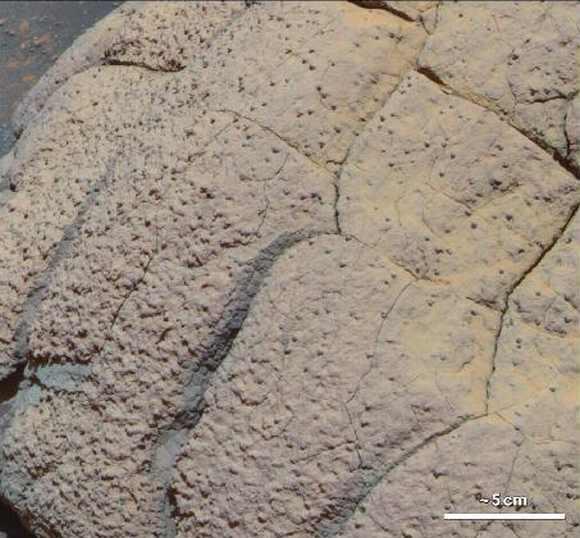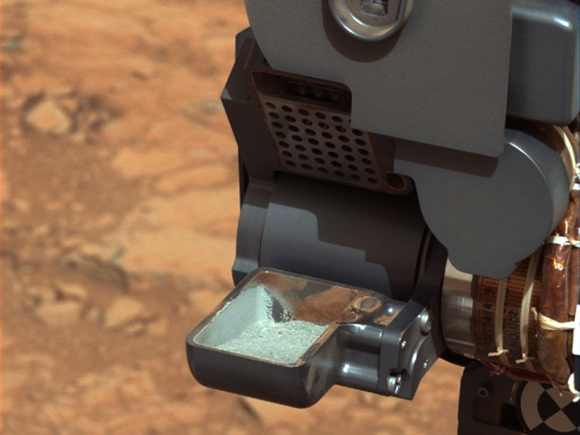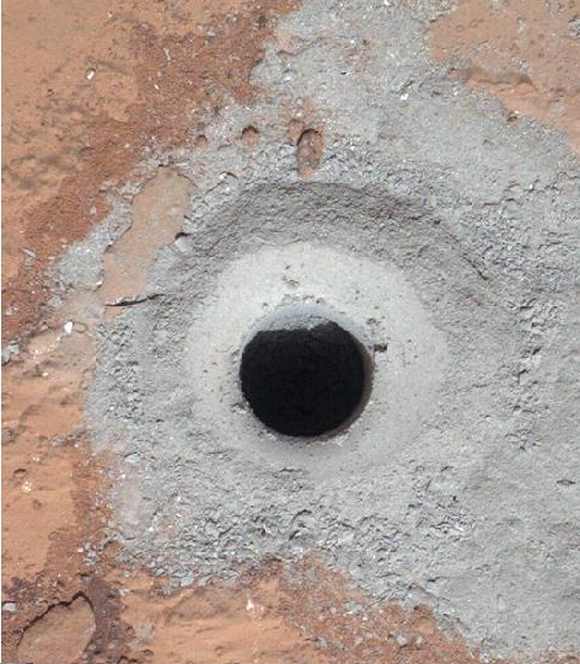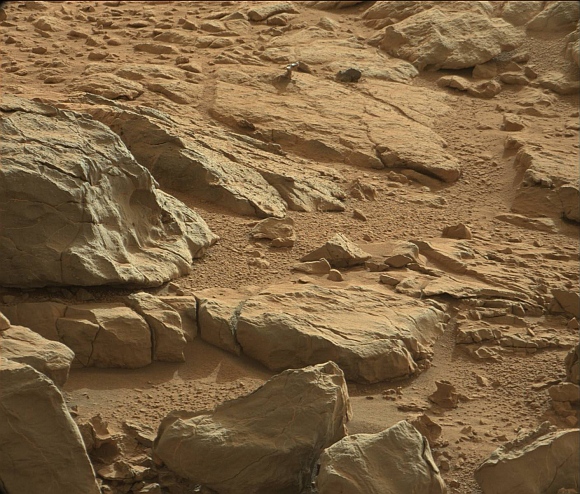Photographs: Courtesy: NASA
An analysis of rock samples collected by the Curiosity rover indicates that Mars could have supported living microbes, the American space agency NASA has said.
"A fundamental question for this mission is whether Mars could have supported a habitable environment. From what we know now, the answer is yes," Michael Meyer, lead scientist for NASA's Mars Exploration Programme told reporters.
Scientists identified sulphur, nitrogen, hydrogen, oxygen, phosphorus and carbon -- some of the key chemical ingredients required to support life -- in the powder Curiosity drilled out of a sedimentary rock near an ancient stream bed in Gale Crater on the Red Planet last month.
...
Mars may have once supported life : NASA
Image: Rocks Yellowknife Bay, in Gale Crater, as seen by CuriosityPhotographs: Courtesy: NASA
"The range of chemical ingredients we have identified in the sample is impressive, and it suggests pairings such as sulfates and sulfides that indicate a possible chemical energy source for micro-organisms," said Paul Mahaffy, principal investigator of the SAM suite of instruments at NASA's Goddard Space Flight Center in Greenbelt, Maryland.
Curiosity, a six-wheeled robot with 10 scientific instruments on board, is the most sophisticated vehicle ever sent to another planet. The data indicate that the Yellowknife Bay area, which the rover is exploring was the end of an ancient river system or an intermittently wet lake bed that could have provided chemical energy and other favourable conditions for microbes.
...
Mars may have once supported life : NASA
Image: This image from NASA's Curiosity rover shows the first sample of powdered rock extracted by the rover's drillPhotographs: Courtesy: NASA
The rock is made up of a fine grain mudstone containing clay minerals, sulfate minerals and other chemicals. This wet environment, unlike some others on Mars, was not harshly oxidising, acidic, or extremely salty, NASA said.
"Clay minerals make up at least 20 per cent of the composition of this sample," said David Blake, principal investigator for the CheMin instrument at NASA's Ames Research Center in Moffett Field in California.
NASA scientists said these clay minerals are a product of the reaction of relatively fresh water with igneous minerals, such as olivine, also present in the sediment.
The presence of calcium sulfate along with the clay suggests the soil is neutral or mildly alkaline.
...
Mars may have once supported life : NASA
Image: The hole produced by Curiosity during the first drilling into a rock on Mars to collect a sample from inside the rockPhotographs: Courtesy: NASA
According to NASA, scientists were surprised to find a mixture of oxidised, less oxidised, and even non-oxidised chemicals providing an energy gradient of the sort many microbes on Earth exploit to live. This partial oxidation was first hinted at when the drill cuttings were revealed to be gray rather than red, it said.
"We have characterised a very ancient, but strangely new 'gray Mars' where conditions once were favorable for life," said John Grotzinger, Mars Science Laboratory project scientist at the California Institute of Technology in Pasadena, California.
...
Mars may have once supported life : NASA
Image: A shiny-looking Martian rock is visible in this image taken by NASA's Mars roverPhotographs: Courtesy: NASA
"Curiosity is on a mission of discovery and exploration, and as a team we feel there are many more exciting discoveries ahead of us in the months and years to come," he said.
The team is already planning out where and when to take the next rock samples, as well as planning out the rover's route to nearby Mount Sharp, where mineral analysis should help with dating calculations.
The $2.5 billion nuclear-powered Curiosity has been exploring the planet's surface since its dramatic landing on August 6, for an anticipated two-year mission.
Scientists do not expect Curiosity to find aliens or living creatures -- and indeed, they said, the rover does not have the capability to identify microbial life or fossils, even if they were present today.






article